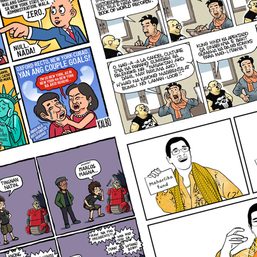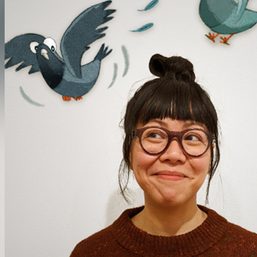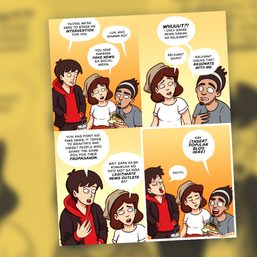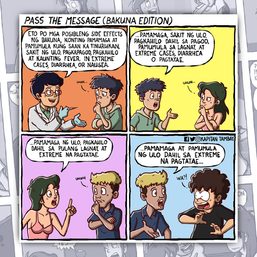SUMMARY
This is AI generated summarization, which may have errors. For context, always refer to the full article.
![[OPINION] Why the emergency subsidy program affects PWDs the hardest](https://www.rappler.com/tachyon/r3-assets/612F469A6EA84F6BAE882D2B94A4B421/img/C85D28B0043F4D4D84EBA4A16827205B/ispeak-disability-sap-640.jpg)

The Bayanihan to Heal as One Act created an emergency subsidy program (ESP) which intended to give between P5,000 and P8,000 to 18 million poor families nationwide. This was to help them survive the enhanced community quarantine imposed over Luzon and several parts of the country due to the COVID-19 pandemic.
The wisdom behind this intervention is pretty straightforward. Aside from being the most humane way of helping our people cope during the pandemic, it also makes economic sense because it can help sustain demand in the market alongside other macroeconomic policies that will assist businesses to stay afloat.
While the ESP intends to cover 18,000,000 low-income families for its first tranche and 23,000,000 for its second tranche, it remains eerily silent about how social minorities actually benefit from the program. Indeed, the Memorandum Circulars of the Department of Social Welfare and Development (DSWD) on the ESP mentioned that poor families with social minorities were qualified to receive the cash assistance, but the guidelines were unclear as to how social minorities, specifically persons with disabilities (PWDs), are targeted for the ESP or their unique needs factored in in the ESP. (READ: As May ends, DSWD unable to release cash aid for 2nd tranche)
The message that the government will provide aid to 18 million vulnerable families is not always an assurance, especially if you belong to the 12% of the population with family members who have disabilities.
Social minorities are groups of people who are excluded from society on the basis of their identity (i.e. gender, disability, ethnicity). The society’s inflexible social and political arrangements that are designed for non-minorities conveniently leave these people outside social protection measures and basic public services even before the pandemic.
Persons with disabilities (PWDs) face multiple layers of marginalization because of their disabilities and the structural and attitudinal barriers in society that affect them exclusively or more severely compared to individuals without disabilities (i.e. inaccessible built environment, public transportation, education, and health services). This is despite national policies and international treaties recognizing their rights as human beings and citizens as early as the 1980s.
In the Philippines, the Accessibility Law or Batas Pambansa Blg. 344 legislated in 1982 was clearly unsuccessful in making mobility inclusive in the country, with many buildings, sidewalks, roads, and public transportation unsuitable for wheelchair, blind, and deaf users. This immediately disproportionately affects 1.4 million individuals according to the 2010 Census or the 12 million individuals with severe disabilities 15 years and older captured in the 2016 Disability Prevalence Survey (DPS) of the Philippine Statistics Authority.
In addition, the mere exclusion of PWDs in the 2015 Census automatically made them statistically invisible to the State, thus making inclusion a challenge for various social protection measures. Consistent with this is their marginal participation in the government’s flagship poverty reduction program — the Pantawid Pamilyang Pilipino Program (4Ps) — with only over 30,000 registered PWD beneficiaries. Meanwhile, there were only approximately 320,000 households with members with disabilities identified in the government’s official targeting system for poverty reduction — The National Household Targeting System or Listahanan — in 2015.
The said figures are way below the 12% estimate of PWDs nationwide. In particular, the small recorded number of PWDs in the Listahanan means that they are disadvantaged from the very beginning of the government’s effort to assist the poor. The 4Ps and all other government social protection measures rely heavily on datasets generated from databases like the Listahanan for their lists of beneficiaries.
The COVID-19 pandemic and government’s corresponding response measures magnified the challenges confronted by PWDs pre-pandemic. For example, PWDs were not automatically included in the list of ESP beneficiaries and disability costs were not considered in designing the ESP. (READ: [ANALYSIS] Free money for every Filipino, at least during emergencies)
Our proposal to give a health grant to all PWDs as part of the government’s ESP is informed by feedback from the experience of a household with a member with disabilities that needed to allocate at least 25% of their ESP cash grant to disability-related expenses (i.e. medicines and transportation). As such, the said household was able to spend significantly less for basic commodities and utilities using their ESP money compared with households without members with disabilities.
News reports have also been published and aired recently indicating how PWDs suffered from their attempt to avail of the ESP benefit, such as lining up despite excruciating pain for the entire day. The media likewise captured stories detailing the difficulties PWDs faced when accessing healthcare needs and basic essentials, particularly in transportation (e.g. to get to a dialysis center).
In addition, our consultations with some barangay officials also revealed that some poor families with PWDs might have been removed the final DSWD-approved list of ESP because 1) the DSWD’s process of elimination in the barangay endorsed list was unclear; and 2) some barangays did not record which households had members with disabilities. As such, when the DSWD cut households from the final ESP list, the households with disabilities could have easily been among them.
The 2016 disability prevalence number of PWDs alone and the multiple burdens confronting PWDs are strong enough reasons to ensure that social protection measures like the ESP be designed to be disability-inclusive, with inclusion meaning the actual targeting of PWDs for the said benefits, factoring in the unique predicaments and needs of PWDs.
We have to do more than surface PWDs in the statistics of the ESP beneficiaries. We hope that the government takes notice of these issues and shows that our society is not just designed for non-PWDs, especially in the time of COVID-19. The reality is that we can all have a disability (permanent or otherwise) at any point in our lives, and how we take care of PWDs now can also dictate partly the quality of our lives in the future. – Rappler.com
Bianca Lapuz and members of Advocates of Inclusion worked to put this piece together. They are
currently lobbying for an emergency health grant for persons with disabilities (PWDs) in
Congress. You can help by writing to your representative in Congress and our senators to
support the advocacy.
Add a comment
How does this make you feel?





There are no comments yet. Add your comment to start the conversation.